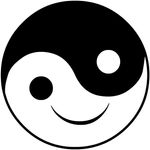White vs Colors vs Black
Copy link to clipboard
Copied
Is there a way to measure the White space in a Photoshop file in comparison to the amount of space Text takes up and Images take up? This will help my company know if a book has too many images or too much white space or too many words.
For example: The document is considered 100% filled. Perhaps 10% of the document is filled with images, 30% of the file is take up with text / words, and 60% is filled with white space. 10% + 30% + 60% = 100% of the document.
Could all the white pixels be counted and compared to all the colored pixels and the black pixels to maybe determine this ratio?
Explore related tutorials & articles
Copy link to clipboard
Copied
If you have a letter O, does the white space in the hole count towards "too much white space"? How about the space above "o" in "tot" or below "i" in "gig"?
Copy link to clipboard
Copied
Yes. Different fonts utilize different amounts of space. It would be helpful to know Numbers / Ratios on the different fonts we could use (for Example, Times New Roman font makes the amount of black / text space 5% of the book [maybe] while Arial only takes up 4% of the book). Could this be achieved from counting pixels?
Copy link to clipboard
Copied
Photoshop does not know a pixel with text from a pixel with image a pixel just has a value. What about white areas within an image would you count them as image pixels or space. black areas within images - would you count those as image or text? A simple count of pixel levels will not separate them.
Dave
Copy link to clipboard
Copied
Thank you so much for your comment. I am sorry the problem is so confusing - I do not like it either. Unfortunately, my managers thought it best to add it to my to-do list as an analyst. To accomplish this impossible task I have been assigned (despite my objections), I am willing to try taking two or three files and separately counting the pixels to find a ratio. One file could have only the images of the book. One file could have only the texts of the book. One file can be completely blank to stand for the 100% part of the ratio. This could combat the fact that most programs when counting pixels would not be able to tell the difference between a word and an image. (Pixel counting is the only way I can think of, but I am greatful for everyone's advice.)
Copy link to clipboard
Copied
This will help my company know if a book has too many images or too much white space or too many words.
By @PensacolaChri30005758izls
I'm confused by your question. Readability can't be measured in pixels. There are too many other factors to consider.
In graphics, white space is largely intuitive and variable depending on content & target audience. Arguably, you could have a pleasing design with plenty of negative space on a dark background with white text. How would counting pixels help you with that?
In the publishing world, word count + other stats are counted by desktop publishing apps like MS Word. In fact, Word has a great proofing tool to check readability -- go to File > Options > Proofing, select “show readability statistics.” The higher the value, the easier it is to read. A reading grade of 9.4 indicates that someone in the ninth grade should be able to understand it based on Flesch-Kincaid Readability Tests.
Using the above numbers as an example, let's say your document has 12 images.
Each page can hold 250-300 words, on double-spaced letter paper with average margins & 12pt fonts.
Your manuscript would be about 6-7 pages long without the images. If you add images, the manuscript would be about 7-8 pages long.
However, the best number of pages for your manuscript will depend on the specific content & target audience. A scientific journal might require 6 pages or less, a children's article might need larger fonts on more pages so young readers can absorb the information.
I wish I could tell you there's a Holy Grail formula for this but AFAIK there isn't one. It comes down to practical experience and design choices.
Copy link to clipboard
Copied
This is fascinating! I will definitely delve into this more! I will also see if my managers are aware of this tool. Perhaps seeing how the number of pages increases once images are added could be a good way to see if there are too many images in a book. Or maybe seeing how many words can fit on a typical page and then finding the decrease of words when an image is added. That way, when a template is drawn up, we can state that only (for example) 25% of the book can be filled with images. Just my quick-first-impression thoughts on your comment. Thinking of how to make art numerical is difficult for sure! Thank you for the help!


